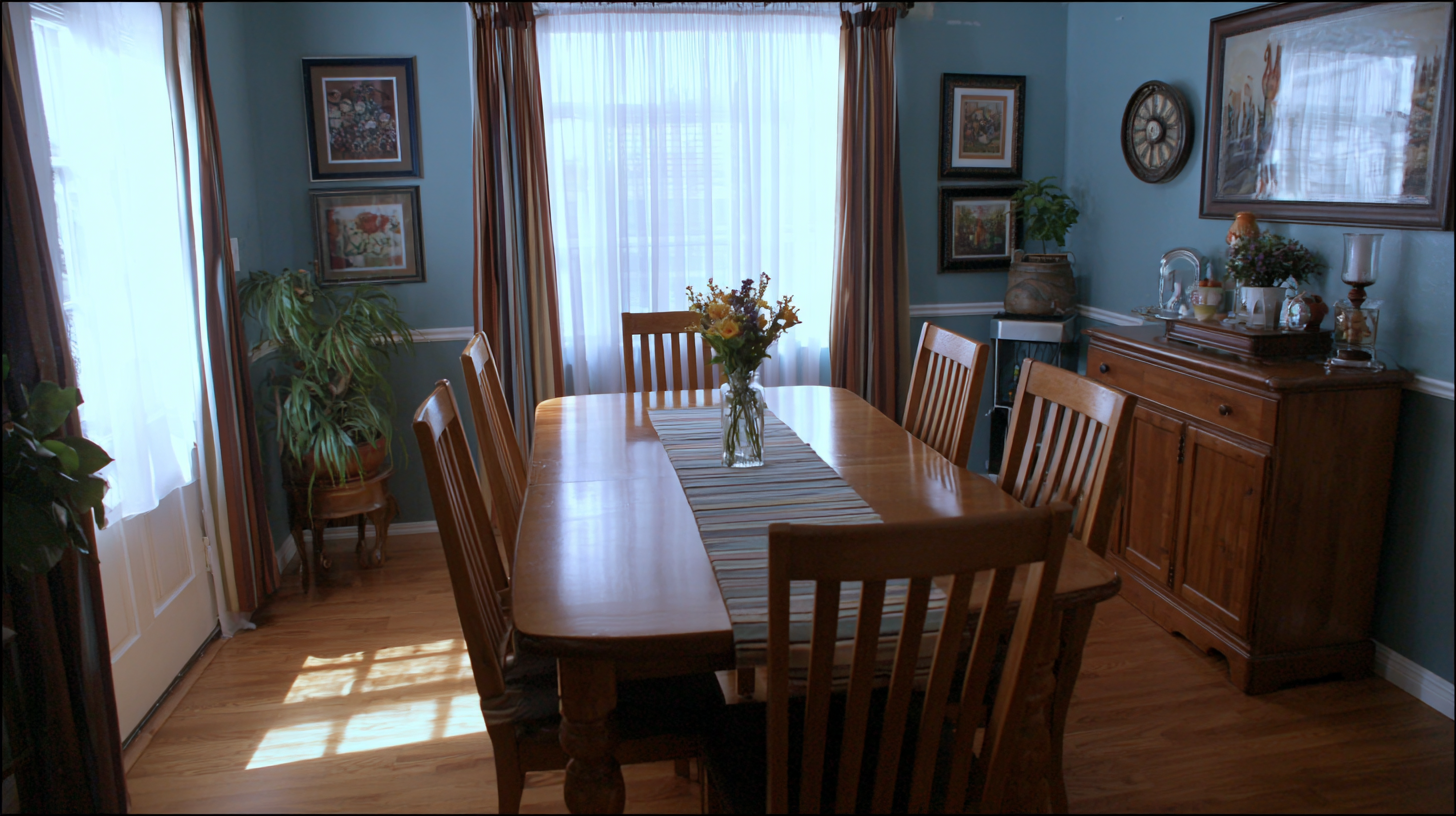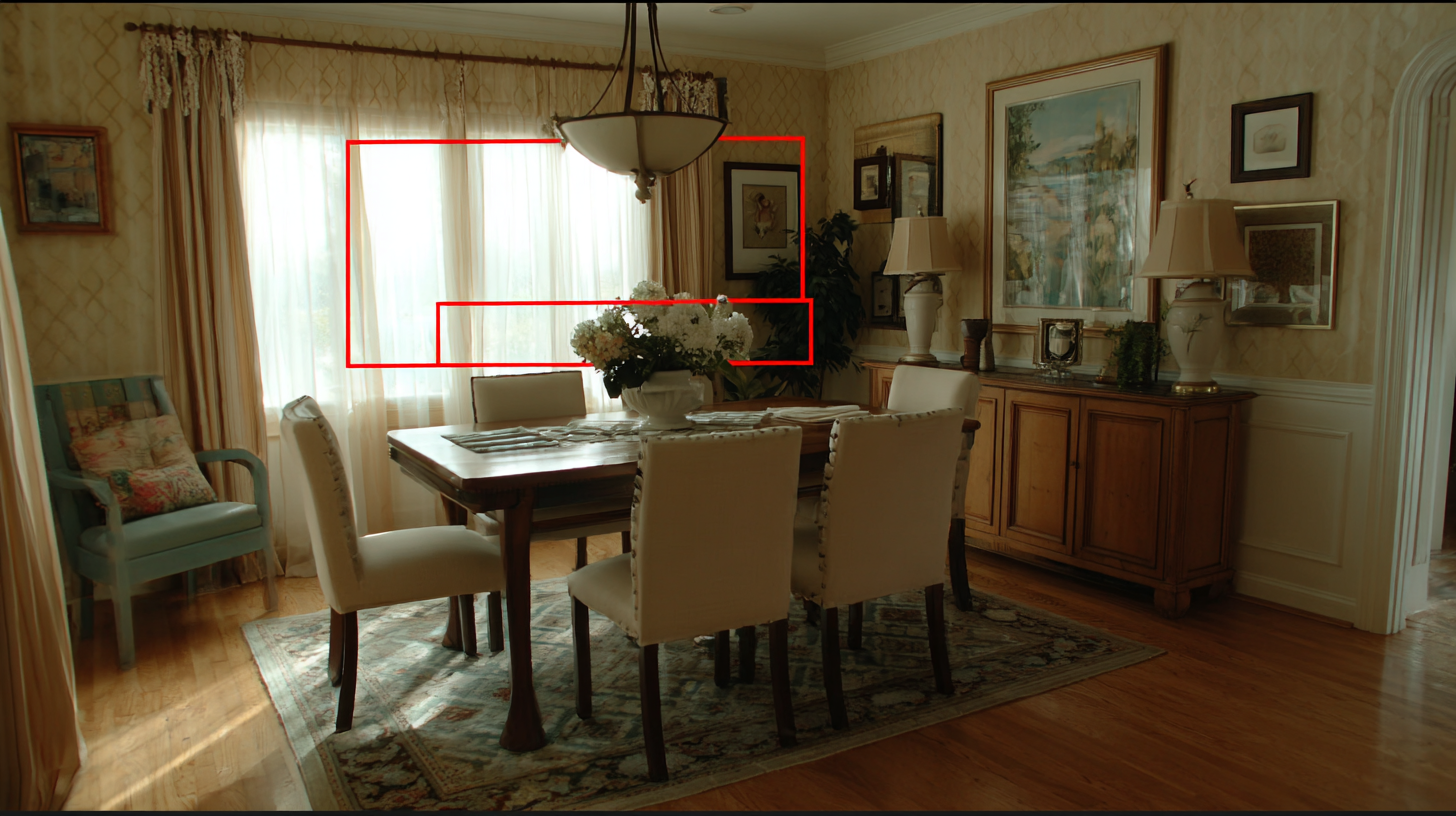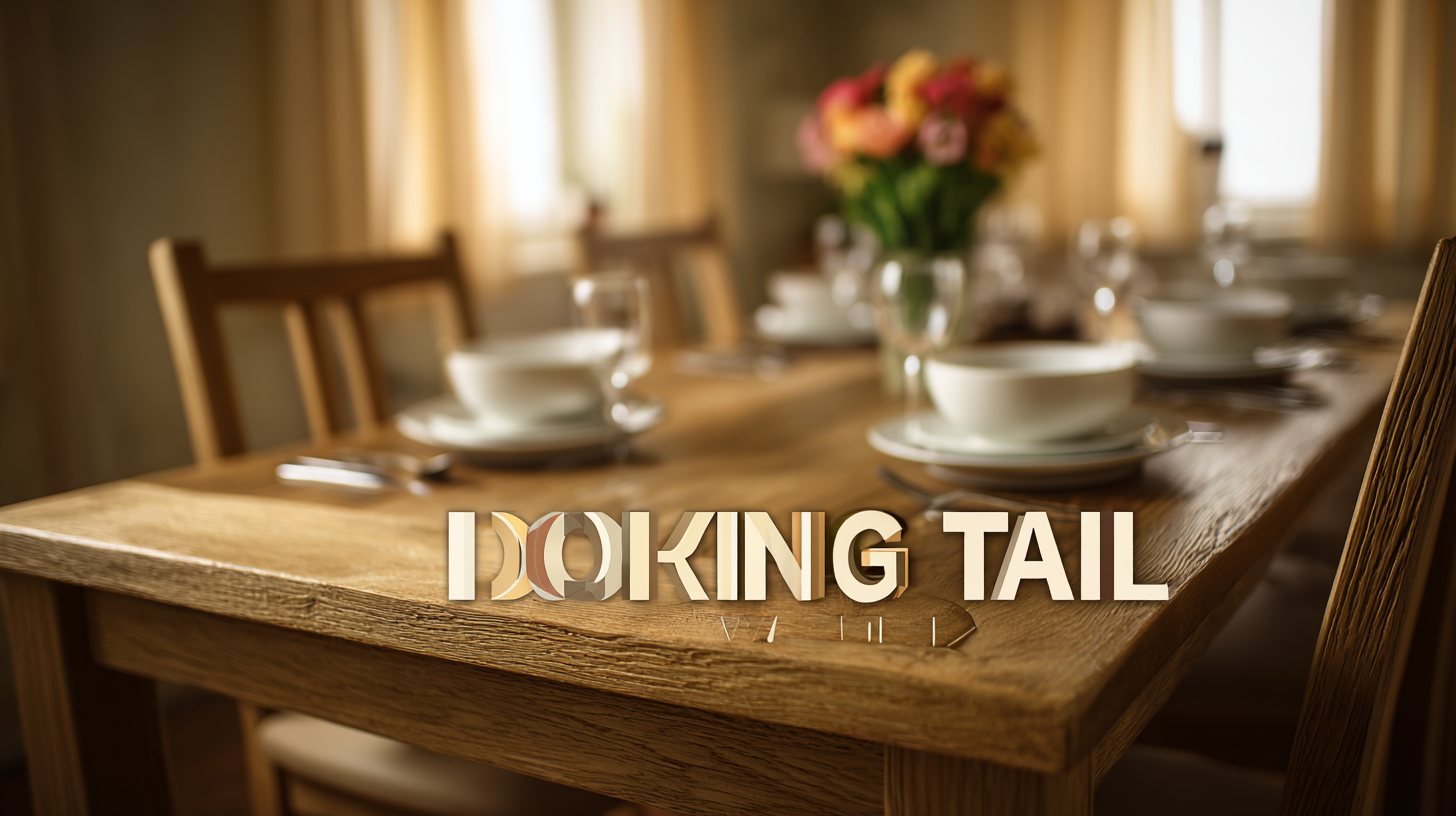Unlocking the Features of the Best Dining Room Table with Step by Step Guide
The dining room table serves as the heart of every home, facilitating not just meals but also conversations, celebrations, and everyday family interactions. According to a recent report by the National Kitchen and Bath Association, 85% of family gatherings occur around the dining table, highlighting its vital role in fostering connection and community.

However, with the multitude of styles, materials, and features available today, choosing the best dining room table can be a daunting task. A comprehensive understanding of the benefits of different table types—be it extendable, round, or rectangular—can significantly enhance your dining experience.
This guide will walk you through the key features and considerations to help you unlock the potential of your dining room table, ensuring it meets the needs of your lifestyle while providing a welcoming atmosphere for both daily meals and special occasions.
Key Considerations for Selecting the Perfect Dining Room Table
 When selecting the perfect dining room table, several key considerations come into play to ensure it suits both practical needs and aesthetic preferences. First, consider the size and shape of your dining space. A table that complements the room's dimensions enhances flow and usability. Round tables can promote intimacy, while rectangular ones are great for larger groups or families. Additionally, measuring the available space allows for optimal arrangement, ensuring enough room for chairs and movement.
When selecting the perfect dining room table, several key considerations come into play to ensure it suits both practical needs and aesthetic preferences. First, consider the size and shape of your dining space. A table that complements the room's dimensions enhances flow and usability. Round tables can promote intimacy, while rectangular ones are great for larger groups or families. Additionally, measuring the available space allows for optimal arrangement, ensuring enough room for chairs and movement.
Next, contemplate the materials and style of the table. Whether you prefer classic wood, sleek glass, or a modern metal finish, the material can significantly affect the table's durability and maintenance requirements. A sturdy table not only withstands daily use but also adds a touch of elegance to your dining area. Don’t forget to think about function, especially with the rise of pre-prepared meals and casual dining trends. Tables that accommodate these lifestyle changes, like those with expandable features or easy-to-clean surfaces, can be especially beneficial for modern households. Ultimately, the right dining room table is one that harmonizes with your home while catering to your everyday dining needs.
Essential Materials and Finishes for Durability and Style
Choosing the right materials and finishes for your dining room table is crucial for achieving both durability and style. Solid hardwoods, such as oak, walnut, and maple, are often preferred due to their strength and natural beauty. These materials not only withstand the rigors of daily use but also age gracefully, developing a unique character over time. When selecting a wood type, consider both the grain pattern and the finish that will enhance its aesthetic appeal while providing protection against spills and scratches.
In addition to hardwood, consider finishes that complement your table's style while ensuring longevity. A high-quality polyurethane finish offers excellent durability and resistance to moisture, making it ideal for families or those who entertain frequently. On the other hand, natural oils and waxes can bring out the wood's natural beauty but may require more upkeep. For a contemporary feel, you might explore metal accents or glass tops, which can add a sleek touch while remaining easy to clean. Choosing the right combination of materials and finishes will not only enhance the look of your dining room but also ensure that your table withstands the test of time.
Understanding Dimensions: Finding the Right Size for Your Space
When it comes to choosing the best dining room table, understanding dimensions is crucial to finding the right fit for your space. The size of your table can greatly influence the overall aesthetic and functionality of your dining area. To start, measure the available space, considering both the length and width of the room. A good rule of thumb is to allow at least 36 inches of clearance around the table, providing enough room for chairs to be pulled out and for guests to navigate comfortably.
Once you have a clear sense of your available space, think about the shape of the table that best suits your needs. Rectangular tables are ideal for larger rooms and can accommodate more guests, while round tables work well in smaller spaces and create an inviting atmosphere for conversation. Don't forget to factor in the height of the table as well; typically, dining tables range from 28 to 30 inches high. By carefully assessing dimensions and considering your space's configuration, you can unlock the potential of your dining room and ensure a perfect fit for memorable meals with friends and family.
Design Styles Explained: Choosing Between Modern, Rustic, and Traditional
When choosing the perfect dining room table, it's crucial to consider the design style you want to embrace. The main options—modern, rustic, and traditional—each bring a unique aesthetic and atmosphere to your home. Modern design is characterized by clean lines, minimalism, and a focus on functionality, often utilizing materials like glass and metal. It can create an airy, contemporary feel perfect for urban living. On the other hand, rustic design offers a warm and inviting ambiance, emphasizing natural materials like wood and stone. This style often incorporates weathered finishes and handcrafted elements, giving a cozy, countryside vibe reminiscent of farmhouse aesthetics.
Traditional design, with its rich furnishings and classic motifs, provides a sense of elegance and heritage. It often features ornate details and intricate patterns, showcasing a refined approach to interior decor. While rustic and farmhouse styles share similarities, the former leans towards rugged charm, whereas farmhouse focuses on practicality and simplicity. By understanding these differences, you can skillfully navigate the options and choose a dining table that not only complements your space but also resonates with your personal style, ensuring a dining experience that is truly memorable.
Features of Dining Room Tables by Design Style
Step-by-Step Maintenance Tips for Longevity and Appearance
Maintaining your dining room table is crucial to ensure its longevity and appearance. A well-cared-for table not only enhances your dining experience but also preserves your investment. According to a recent industry report, proper maintenance can extend the lifespan of wooden furniture by up to 15 years. Regular cleaning with a damp cloth and using coasters for beverages can significantly reduce wear and tear, preventing unsightly rings and scratches.

In addition to cleaning, it's essential to protect your table from environmental factors. Extreme temperature changes and excessive sunlight can cause damage to the finish. A report from the Furniture Manufacturers Association highlights that keeping your dining room at a stable temperature and using curtains or blinds to shield the table from direct sunlight can help maintain its luster. Regularly applying a high-quality wood polish can also rejuvenate the surface, ensuring your table remains a centerpiece for family gatherings and meals for years to come.
